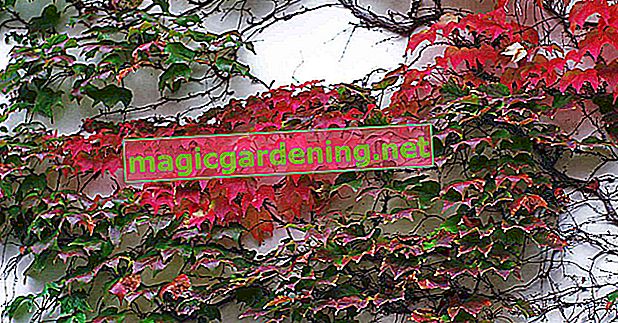
Removal of the tendrils
Removing the tendrils is comparatively easy. To do this, simply cut through the main shoots just above the ground - ideally at the beginning of the growing season - and wait until the individual tendrils have died. This can take a few days to weeks. The plant can then be pulled or torn from the subsurface, but a lot of stubborn residues remain.
also read
- Wild wine - how to remove the virgin vine from the wall of the house
- Wild wine - this is how to cultivate the virgin vine in the pot
- Wild wine - is it allowed to cultivate the virgin vine on the balcony?
Remove the root
At the same time, you should make sure to remove the roots with as little residue as possible - the less root remains, the better! Unfortunately, the wild wine is able to sprout even the smallest remains of roots and these can also hide under or in the foundation or in tiny cracks and cracks. Dig out the individual parts of the root as generously as possible. Chemical agents are unfortunately not a solution due to their negative effects on humans and nature.
Remove the remains of the wild wine
Now it gets really tricky, because the adhesive feet and the little twigs attached to them are extremely tight and can only be removed with great effort - and often not particularly successfully. Various methods are available for this, which are selected depending on the substrate.
Burning with the gas burner
A very effective method is burning it with a gas burner, although for understandable reasons this is only possible on masonry without any external insulation. Wooden substrates are not suitable for this either. After burning, brush away ashes and dry plant residues with a steel or wire brush, then a new coat of paint is due.
high pressure cleaner
Furthermore, plant residues can be removed with a hot water high-pressure cleaner (€ 85.90 at Amazon *). With this method, however, it is advisable to soak the leftovers beforehand with acetic acid and a brush and work on them.
Brushing and sanding
Plant residues can be removed from surfaces with rough plaster using a drill (€ 43.99 on Amazon *) or an angle grinder with a wire brush attachment, flap disc or diamond milling insert.
Knock off the plaster and re-plaster
If nothing helps, all you can do is knock off the entire plaster and plaster the facade again.
Tips
You can also brush the plant remains with dilute hydrochloric acid or acetic acid and then remove it using one of the methods mentioned. As a rule, the coating should be done several times.








